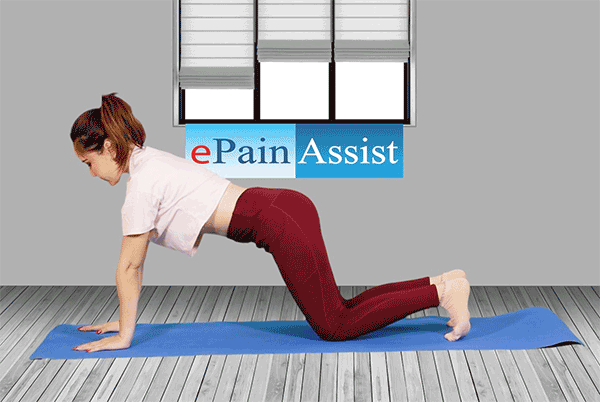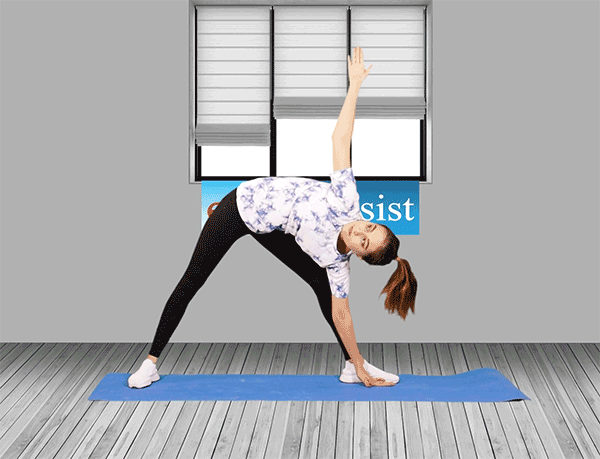Back Pain After Surgery
Postoperative pain after surgical procedures of back is very commonly seen in people. Many people commonly experience back pain after surgery.(1) According to recent studies, spinal surgery has been rated among top six causes of severe post-surgical pain. Back pain after surgery can be one of the complaints associated with post-surgical problems, which need medical attention. Let us understand about back pain after surgery, its causes, symptoms, treatment and rehabilitation.
There are various spinal surgeries performed for various purposes. The commonest ones like laminectomy or foraminotomy i.e. removal of bone, discectomy i.e. removing disc material, anterior lumbar interbody fusion (ALIF) and posterior lumbar interbody fusion (PLIF) i.e. instrumented or bony fusion of the spinal segments, scoliosis corrections, and spinal tumor excision etc. are being preferred in medical practice.
Sometimes this post-surgical pain is also stated as failed back surgery syndrome (FBSS). Though the term given, raises the question over quality of procedure done or fault done at surgeon’s part to be failed to cure the previous pain totally but this is misnomer. Since failed back surgery syndrome is merely persistent pain or new pain after spinal or back surgery. This pain is usually felt in back and sometimes legs also involved. Back pain after surgery is most commonly associated with this condition; however, other causes and related conditions also need to be evaluated.

Causes of Back Pain After Surgery
Causes of back pain after surgery can be related to many factors. As wide array of subcutaneous tissues, bones, and ligaments are generally dissected during spinal surgical procedures, it is believed that a combination of many factors are associated as causes of back after surgery. Hence, a single cause cannot be isolated for pain after back surgery. However, some of the commonest causes of back pain after surgery can be considered.
The pain may be originated due to nerve root involvement, tissue cutting, muscle spasm or combination of all these factors. Different tissues such as vertebrae, intervertebral discs, ligaments, dura, spinal nerve roots, facet joint capsules, fascia, and muscles are the prime factors that play an important role in development of back pain after surgery.
Formation of a scar tissue called epidural fibrosis is very commonly seen in the postoperative phase. This is due to inflammatory healing ending with fibrotic tissue development in epidural space. If this is placed at nerve root of lumbar region, the fibrous adhesions pressed down the nerve root. It results in decompressed nerve root and often causes severe pain.
Different kind of nociceptors and mechanoreceptors are involved that can elicit and transmit these pain sensation. Therefore various mechanisms like nociceptive, inflammatory, neuropathic etc. in the form of compression, excessive degree of inflammation or some kind of mechanical irritation are some of the common causes of back pain after surgery.
Symptoms of Back Pain After Surgery
Back pain after surgery is in itself a symptom, however, there are few associated complaints as well. Some of the commonest symptoms of back pain after surgery include
- Pain in the back is the prime symptom.
- Back pain after surgery may be persistent in nature or a new in origin.
- Persistent type of back pain may sometimes confuse with the previous pain because of being similar in nature.
- The back pain is mostly severe and may last up to 3 to 5 days or more.
- Pain due to pathology of epidural fibrosis that is scar tissue fibrotic adhesions compressing the nerve root mostly appears 6 to 12 weeks after the spinal surgery. Initially there is relief for shorter period but pain again occurs which is periodic or persistent in nature.
- Some people may experience delayed back pain after surgery. Delayed pain, which appears after one or more years after the back surgery, mostly does not originates from scar tissues. There pathology may be different and must be evaluated with appropriate investigations.
- Chronic back pain should not be confused with postoperative back pain as this type of pain develops slowly and also shows gradual improvement.
Treatment of Back Pain After Surgery
Treatment of back pain after surgery mainly depends on the underlying cause for which the surgery was performed and the presenting complaints. Proper history taking along with physical examination are the main keys for precise diagnosis. Technologies like Imaging (X-ray, MRI) also help in high class accuracy.
So many oral and parenteral methods are being used to relief the patients from this severe kind of postoperative pain. Some of the medicines used for treatment of back pain after surgery include:
- NSAIDS (non-steroidal anti-inflammatory drugs)
- Paracetamol and acetaminophen
- Ketamine
- Corticosteroids
- Narcotic analgesics like opioids.
Intra thecal drug administration – opioids, local anesthetics and steroids are drugs that are administered through intra thecal route to relieve the patient. As local anesthetics and opioids both have their multiple serious side effects, combination therapy of both the drug is preferred. Having low dosage forms and synergistic effect are the advantageous effect of this combination therapy.
Epidural drug administration – epidural route of drug administration for postsurgical analgesia is a safer option as it shows lesser incidence of unwanted events. Though vigilant monitoring during these techniques are required. Opioids, local anesthetics and steroids are drugs that are administered via epidural route. Single or combination drug therapy can be applied.
Transcutaneous electric nerve stimulation (TENS) – This form of treatment uses electric nerve stimulation, which is useful in reducing pain and relaxing the area. This is used more when there is nerve pain or nerve compression like radiating pain or numbness, tingling along the nerve course.
Extended release formulations: This is a new technique preferred now a days since having longer duration of action and relief. Drugs loaded Liposomes administered at surgical spot release drug in surrounding area for a longer period.
Neurotomies: Nerve endings are heated to reduce the pain. Mostly multimodal drug therapy is used to alleviate the pain and relieve the discomfort to the patient.
Rehabilitation For Back Pain After Surgery
The purpose of rehabilitation of back pain after surgery, is to re-establish good health and normal life after therapy or surgery.(2) During recovery phase some amount of pain and discomfort may be present. Therefore rehabilitation process of back pain after surgery mainly includes therapeutic exercises, physiotherapy and remedies. These are a necessary part of post-operative or post therapy state. Basic concept behind it is to stretch the nerve root by movement or certain exercises and position so that nerve remains mobile during healing process. This helps to reduce the possibility of formation of epidural fibrosis (scar tissue), which is the main culprit for pain after surgery.
To control pain after surgery, the following is used
- Ice application: Applying ice at the surgical site and place of pain reduces the intensity of pain and inflammation.
- Wax Therapy: Paraffin wax is used to relieve pain and stiffness. Heat increases the flexibility of muscle, ligaments and also increases the circulation of blood.
Therapeutic Exercises for Back Pain After Surgery
Therapeutic exercises are an integral part of rehabilitation of back pain after surgery. However, as the condition of every patient is different, it is necessary to follow medical advice and plan and perform these exercises only under the supervision of physical therapist. Most of these exercises must be performed depending on the health condition and after the pain is completely subsided.
- Cardiovascular: walking, cycling, treadmill to strengthen the respiratory and cardiac system.
- Muscle strengthening and Endurance exercises: Pushups, Squats, step ups, shoulder flexion, hip extension, and buttock lifts etc.
- Stretches: Hamstrings, hip abductor, quadriceps muscle stretch.
Yoga
Apart from exercises, yoga too is a very good way to maintain fitness and relieve back pain after surgery. While there are several yoga poses that can be helpful for this purpose, it is advisable to perform only those which are comfortable based on one’s condition. Follow medical advice and plan yoga exercises with the help of an expert to follow regularly.
Asanas or Poses: Certain spine positions and movements in yogic asanas relieve back pain by strengthening muscles. They also help to reduce the risk for configuration of any adhesions and fibrosis in postoperative phase. Yoga postures are advised according to patient’s stamina, endurance and health condition. These asanas should be practiced under the supervision of experts otherwise condition to make sure that they are performed correctly, without pulling the muscle wrongly or causing over exhausting. Hence consultation to the therapist before beginning the yoga is much required.
Some yogic asanas that help to alleviate back pain after surgery include
- Balasana or child pose

- Adhomukha swanasana or downward facing dog pose.

- Marjaryasana or cat pose

- Bitilasana or cow pose

- Kapotasana or pigeon pose
- Dhanurasana or Bow pose

- Bhujangasana or Cobra pose

- Trikonasana or Triangle pose

- Supta jathar parivarasana or supine spinal twist
- Ardha matsyendrasana or sitting half spinal twist pose
- Halasana or plow pose

- Shalabhasana or Locust pose
- Garudasana or Eagle pose

- Vrikshasana or tree pose

Pranayama: This breathing technique helps in physical as well as mental relaxation along with strengthening of muscles. Control breathing in a systemic rhythm known as pranayama increases circulation of blood and oxygen to the healing site. Thus also helps in early healing.
Meditation: Various types of meditation can be performed that help in relaxation of mind and body, thus reducing pain, improving positivity and overall health status.
